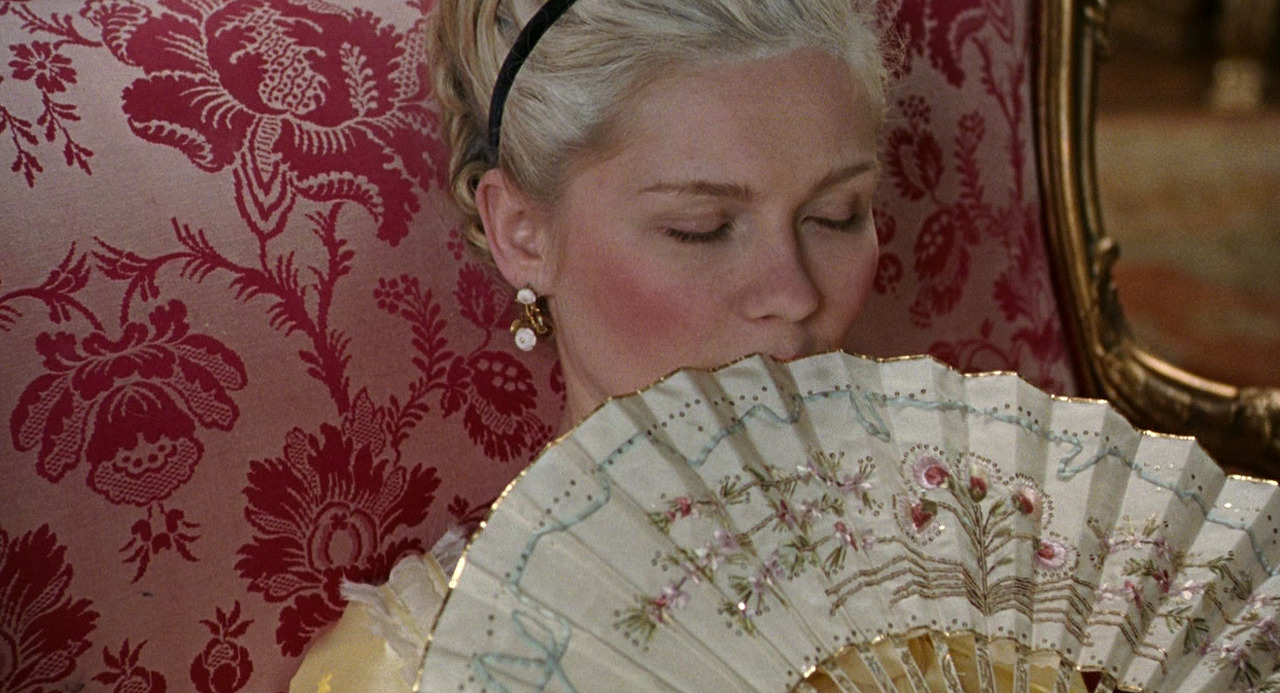
Marie Antoinette
Marie Antoinette was shot on location at the Château de Versailles.Coppola has stated that with time, reception to the film has strengthened and reception has warmed and that the film has found its own place, describing it has had more of a life now than when it first came out.Coppola has managed to forge a distinctive identity in spite of her father's reputation as a major figure in American cinema. Notably, a commonality of her films is that they all in some way touch on complex relationships between youth and age.
The Virgin Suicides, Lost in Translation, Marie Antoinette, the three aforementioned films, all in some way approach issues of identity and the question of whether it is made or imposed, and do so through elements of teen films such as the rites-of-passage narrative and contemporary scores, yet still manage to maintain a specific European arthouse feeling It has also been suggested that Coppola herself identifies with film's young woman protagonist, characterized by a sense of naivety and uncertainty of the future.Coppola herself has claimed that she was initially pulled towards the character of Marie Antoinette as an innocent and caring character who found herself in a situation outside of her control, and that rather than creating a historical representation, she wanted to create a more intimate look into the world of the heroine.Scholars have highlighted the film as one that contains obvious parallels between Coppola's own life as a Hollywood “royal” and Marie Antoinette's position as the victim of xenophobia, malice, and envy.In terms of Coppola's personal connections to her films, scholars have described the films as “deliberately idiosyncratic,” as opposed to explicitly autobiographical.[47] Coppola has also not disputed viewers’ readings of her films as somewhat personal to her own life and story, and has claimed that her films are made more for friends and family than the outside world.In regards to the critics’ divided views of Marie Antoinette, it has been said that Coppola's use of travesty in the film could have been a factor in the industry's disparate opinions.Fashion, which can facilitate travesty, is a large part of Coppola's film in the ways it was used to represent the nature of the period of time and create mood
Plot
Fourteen-year-old Maria Antonia is the beautiful, charming, and naïve Archduchess of Austria, youngest of Empress Maria-Theresa's daughters. In 1770, the only one left unmarried among her sisters, she is sent by her mother to marry the Dauphin of France, the future Louis XVI, to seal an alliance between the two rival countries. Marie-Antoinette travels to France, relinquishing all connections with her home country, including her pet pug "Mops", and meets King Louis XV of France and her future husband, Louis-Auguste. The two arrive at the Palace of Versailles, which was built by the Sun King, Louis XIV. They are married at once and are encouraged to produce an heir to the throne as soon as possible, but the next day it is reported to the king that "nothing happened" on the wedding night.
As time passes, Marie-Antoinette finds life at the court of Versailles stifling. Her husband's courtiers disdain her as a foreigner and blame her for not producing an heir, although the fault really lies with her husband, for the marriage remains unconsummated for an inordinate amount of time. The French court is rife with gossip, and Marie-Antoinette consistently ruffles feathers by defying its ritualistic formality. Marie-Antoinette also refuses to meet or speak with Jeanne Bécu, Comtesse du Barry, the mistress of Louis XV. Over the years, Maria-Theresa continues to write to her daughter, giving advice on how to impress and seduce the Dauphin. Marie's attempts to consummate with her husband fail and the marriage remains childless. Marie spends most of her time buying extravagant clothes and gambling. After a masquerade ball, Marie and Louis return to find that the King was dying of smallpox; he orders du Barry to leave Versailles and soon dies. Louis XVI is crowned King of France, with Marie-Antoinette as Queen.
Marie-Antoinette's brother, Joseph II, Holy Roman Emperor, comes to visit, counseling her against her constant parties; advice that she finds easy to ignore. Joseph meets Louis XVI at the Royal Zoo and explains to him the "mechanics" of sexual intercourse in terms of "key-making", as one of the King's favorite hobbies is locksmithing. Thereafter, the King and Marie Antoinette have sex for the first time, and on 19 December 1778, Marie Antoinette gives birth to a daughter, Princess Marie Thérèse Charlotte of France. As the child matures, Marie Antoinette spends much of her time at the Petit Trianon, a small chateau in the park of Versailles. It is also at this time that she begins an affair with Axel Fersen. As France's financial crisis worsens, food shortages and riots increase, her public image has completely deteriorated by this point: her luxurious lifestyle and seeming indifference to the struggles of the French people earned her the title "Madame Deficit".
As the queen matures, she focuses less on her social life and more on her family and makes what she considers to be significant financial adjustments. A year after her mother's death on 29 November 1780, Marie Antoinette gives birth to a son, Louis-Joseph, Dauphin of France, on 22 October 1781. She also gives birth to another son, Louis-Charles on 27 March 1785, and another daughter, Princess Sophie on 9 July 1786, who dies on 19 June 1787, a month before her first birthday. As the French Revolution erupts with the storming of the Bastille, the royal family resolves to stay in France, unlike most of the court. Rioting Parisians force the family to leave Versailles for Paris. The film ends with the royal family's transfer to the Tuileries. The last image is a shot of Marie-Antoinette's bedroom at Versailles, destroyed by angry rioters.